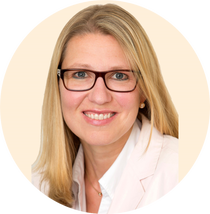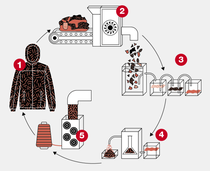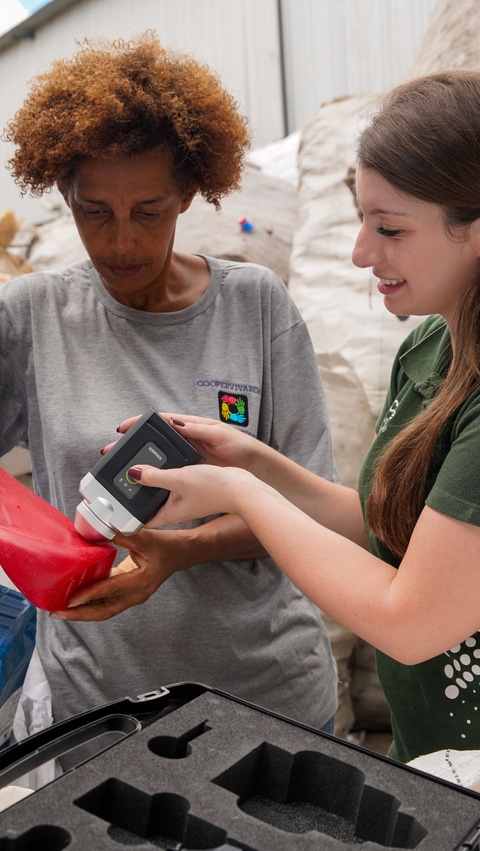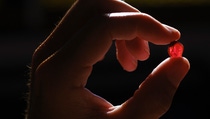Media
We need a new mindset
Talke Schaffrannek is Director of Circular Economy at BASF in Ludwigshafen. In Creating Chemistry, she explains the role that mineral raw materials play for BASF and how the path to a circular economy can succeed.
Raw materials are the starting point of our value creation, and we aim to use these resources efficiently and responsibly. At BASF we procure a number of mineral raw materials like palladium, platinum, cobalt or lithium to produce emissions catalysts, process catalysts or battery materials for electromobility, among other products. Of course, we are aware of the challenges in the supply chain. This makes the sensible resourcing of mineral raw materials highly important to us: When selecting suppliers and raw materials, we consider economic, environmental and social criteria as well as product safety and supply security alongside.

Prior to her role as Director of Circular Economy, Talke Schaffrannek worked in the areas of applied sustainability, business development in Asia, diversity and inclusion, and product management. In her spare time, Schaffrannek runs an association that works to empower women in Nigeria, among other things.
Resource scarcity: Keeping minerals in the loop
We have adopted a specific due diligence approach and aim for third-party verification of our supply chains through independent industrial standards such as the Responsible Minerals Initiative. We are also collaborating with the Deutsche Gesellschaft für Internationale Zusammenarbeit (German Agency for International Cooperation), which focuses on sustainable practices within artisanal mining. We also promote responsible sourcing through industry and multi-stakeholder initiatives, and dialogue with NGOs.
At the same time, we are continually improving our products and processes to minimize the use of primary mineral raw materials. With the new green transformation strategy, BASF underlines the importance of increasing circularity and reducing emissions. To keep minerals in the loop and thus slow down the exploitation of natural resources, we rely on the recycling of mineral resources. We are advancing innovative technologies for the recovery of metals such as lithium, nickel, cobalt and manganese from old lithium-ion batteries. Moreover, we reduce the need for further mining by recovering metals from used automotive and industrial catalysts.
To keep minerals in the loop, we rely on recycling.“
It's time to go round
Our target is to generate a revenue of 10 billion euros from loop solutions by 2030 compared to 5 billion today. Loop solutions include products that are based on renewable or recycled materials, or support the recycling process (close the loop) as well as products that increase the durability or prolong the lifespan of materials (extend the loop). Supporting this target, BASF teams are exploring more than 50 circular solutions in three areas: circular feed stocks, new material cycles and new business models.
An example of a circular feedstock is obtaining pyrolysis oil from old tires or mixed plastic waste. First, the recycled oil is fed into the beginning of our production process along with other feedstocks. Then the volume of recycled feedstock is attributed to a product such as a plastic for car parts or outdoor textiles. The recycled feedstocks and the attribution to our end products follow the requirements of mass balance certification schemes and are audited by independent third parties.
With the groundbreaking loopamid® project, we initiated a new material cycle by developing a novel textile-to-textile recycling solution for nylon-rich textiles. Together with our partner Inditex, we were able to design a jacket based entirely on textile waste from garments. It was launched by fashion retailer Zara in 2024.
New threads from old
A chemical recycling process can transform old clothing into loopamid®, a starting material for new polyamide fibers, which can be used to make new 100 percent circular clothing.

Step 1
Clothing gets sorted and shredded.
Step 2
The fabric shreds are broken down into their chemical building blocks (depolymerization).
Step 3
A cleaning process follows, as the material can contain contaminants and by-products. The output: high-purity chemical building blocks (monomers).
Step 4
The monomers are transformed back into pure polyamide 6 (polymerization), creating a product called loopamid®.
Step 5
loopamid® is the starting material for new polyamide 6-fibers, which can be used to make new, 100 percent circular clothing.
Sorting in no time
A new business model is the mobile near-infrared spectroscopy solution for the identification of plastics to make them easier to sort. The portable handheld device makes it possible to determine different plastics prior to sorting. The solution was developed by BASF subsidiary trinamiX to ensure a clean plastics waste stream across recycling facilities, and combines mobile hardware, data analysis and material expertise. These are important steps in the right direction. But the successful transformation towards a circular economy is only possible if we set up new economic systems together with partners in the various industries. This requires a mindset shift from thinking in value chains to acting in value circles.



